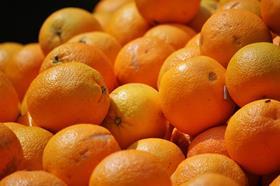
The Australian government has launched a ten-year strategy to safeguard the country's citrus industry from pest and disease incursions.
The National Citrus Biosecurity Surveillance Strategy was unveiled in Mildura today (8 March), with A$$352,000 dedicated to the launch of the initiative.
The funding will cover the appointment of a steering committee to oversee the new programme and the recruitment of a national citrus surveillance coordinator.
'Fruit fly and other pests can ruin fruit and kill market access for our valuable citrus industries,' said Australian minister for agriculture David Littleproud.
'Keeping Australia free of the bacterial disease Huanglongbing (HLB) and the insect that spreads it - Asian citrus psyllid - is a priority. Citrus canker and the nation's number one unwanted plant pest Xylella fastidiosa also pose a grave threat to our successful citrus industry.'
Littleproud said the new strategy would pave the way for a nationally coordinated response to strengthening citrus surveillance by government and industry, which would be led by Plant Health Australia and Citrus Australia.
The value of Australian citrus exports rose to a record 260,000 tonnes in 2017, valued at A$427m. This marked an increase of 19 per cent in volume, and 31 per cent in value, from the previous year.
The Sunraysia region that surrounds Mildura is a key hub for citrus production, generating A$88m in farm gate revenue last season from a crop of around 147,000 tonnes.
Andrew Board, the federal member for the Mallee electorate, said keeping Sunraysia free of pests was essential to the local economy, jobs and livelihoods of many of this regions' blockies.
'We need to ensure the earliest possible detection of incursions to help limit their spread and minimise the disruption outbreaks can cause our growers, not to mention the costs of control,' Board explained.



